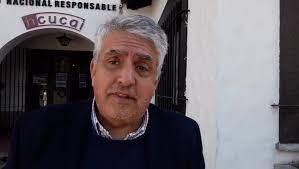
Kidney transplant outcome according to pre-transplant dialysis modality
Ruben Schiavelli1, Jihan Sleiman2, Viviana Tagliafichi4, Ibañez Juan5, Maria Cora Giordani3, Daniela Hansen 4, Bisigniano Liliana4.
1Devision of Nephrology and Renal Transplant, Hospital General de Agudos Cosme Argerich, Caba, Argentina; 2Nephrology and Renal Transplant, IU CEMIC, Caba, Argentina; 3Nephrology and Renal Transplant, Hospital italiano de Buenos Aires, Caba, Argentina; 4Direccion Científico Técnica, INCUCAI, Caba, Argentina; 5Nephrology and Renal Transplant, Hospital de Pediatría Prof. Juan P. Garrahan, Caba, Argentina
SAT/INCUCAI.
Introduction: Hemodiafiltration is a technique combining high-flux hemodialysis and hemofiltration, thus offering the advantages of both procedures, with a high depurative efficiency of small, middle and large molecules. Postdilutional HDF is associated with decreased cardiovascular and non-cardiovascular mortality in prevalent patients, while in incident patients the mortality risk is reduced by between 24 and 75%. Kidney transplant outcomes have been assessed according to the dialysis modality (peritoneal dialysis or hemodialysis), with conflicting results and no differences in graft survival. Thus far we have not found in the literature a comparison of kidney transplant outcomes in hemodiafiltration and hemodialysis patients.
Objective: To compare the outcomes of deceased-donor kidney transplant patients according to their pre-transplant hemodialysis treatments.
Methods: Retrospective study of graft and patient survival in kidney transplant patients from January 2015 to June 2021. Transplant patients were divided into 3 groups: conventional hemodialysis (HD) group; hemodiafiltration (HDF) group; and mixed HD and HDF group. In each group the following was assessed: Recipient: age; sex; length of time on dialysis; vascular access (upon transplantation); HLA mismatch; panel reactive antibody; comorbidities; and last pre-transplant laboratory tests. Transplant: cold ischemia time (CIT) and ablation type. Donor: age; cause of death; last creatinine levels. Data sets were taken from the SINTRA database (Argentine transplant System).
Results: We analyzed 40 patients dialyzed with the HDF modality prior to transplantation (HDFTX) and 155 patients with the hemodialysis one (HDTX). Of the former, 6 were dialyzed with HDF only and 34 started with HD and switched to HDF. These patients were dialyzed with HDF for, at least, 6 months. No significant differences among the HDF vs HD were found in terms of recipients’ age upon transplant (median 53.3 vs 58.9); sex (female 35% vs 39%); high blood presure (82.5% vs 76.6%); diabetes (15% vs 11.9%); heart failure (5% vs 8.8%); Chagas disease (2.5% vs 6.3%); hepatitis C (2.5% vs 0.6%); time on dialysis (median 5.84 vs 5.52 years); donors’ age (median 50.1 vs 47.9 years), cause of death (stroke 70% vs 59.1%/trauma 34.8% vs 20.0%) and donor creatinine levels (median 0.96 vs 0.97 mg/dl) and cold ischemia time (median 17.51 vs 17.25 hours). Patient survival for HDTX was 88.9%, 82.5% and 76.0%, while for HDFTX, 84.1%, 81.2% and 81.2% one, three and five years after transplantation, respectively; P=NS. Graft survival for HDTX was 85.5%, 79.3% and 75.7%, while for HDFTX, 75.0%, 72.4% and 72.4% one, three and five years after transplantation, respectively; P=NS.
Conclusion: The pre-transplant dialysis modality (HD or HDF) does not show differences in terms of graft and patient survival. Further studies with a larger number of patients with an exclusive history of HDF are required to verify these findings.
WalterJ, Raffaele P, Ciappa M, Paladini J, De la Fuente J, Novoa P, Soler Pujol G, Toselli L, Suso E, Ferreyra M, Fragale G, Reinoso S, Acosta F, Sgrosso J, Arriola M, Maldonado R, Acosta M, Prado R, Sedevich A, Martinez I, Di Pietrantonio S, Oddino J, Trimarchi H, Raimondi C, Gómez M, Dorado E, Palti G, Mele P, Maggiora E, Papaginovic Leiva M., Raño.M. SAT Renal Transplant Committee.

right-click to download
